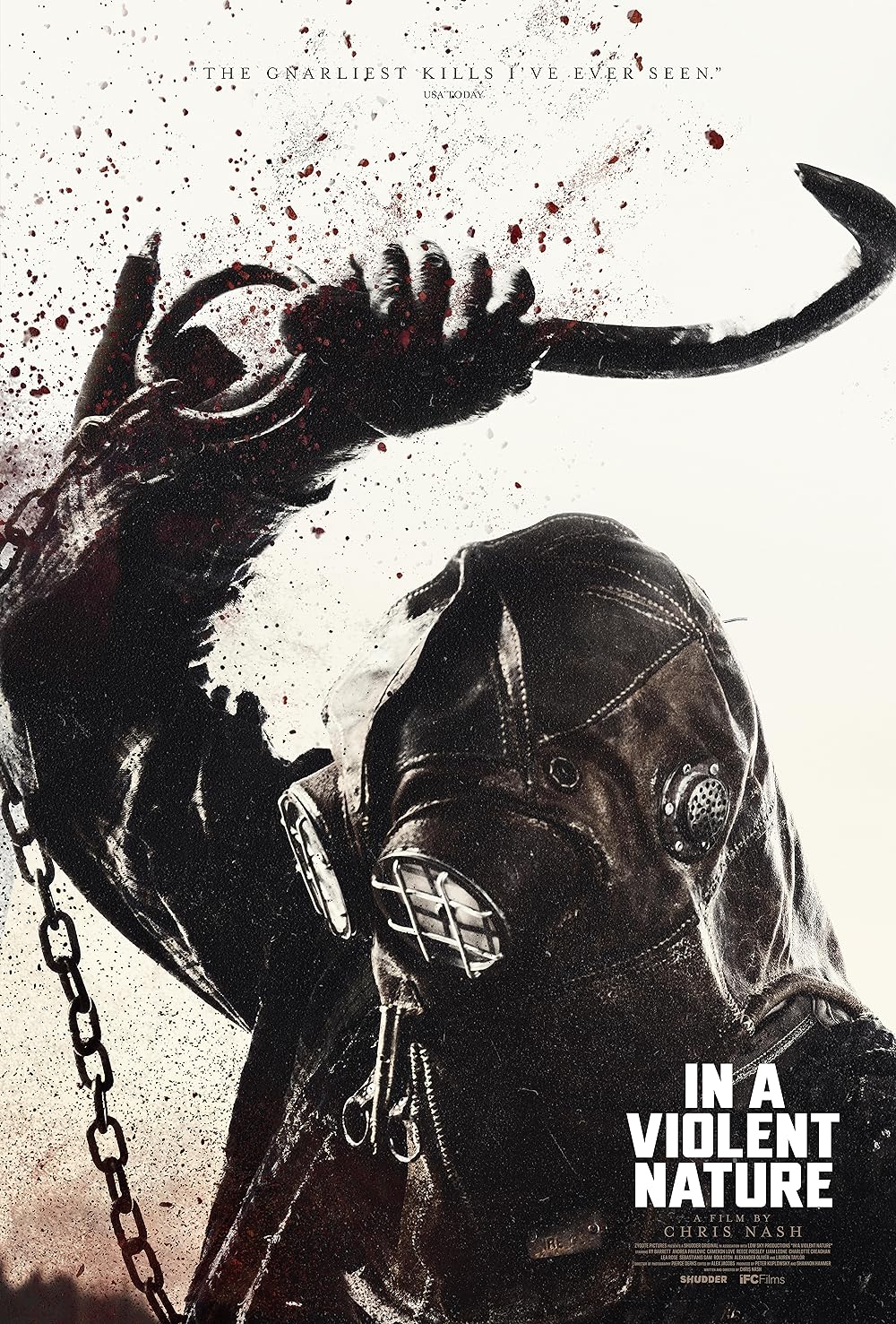The most fascinating thing about Chris Nash’s hyperviolent slasher experiment “In a Violent Nature” is that it’s not scary. At least, not in the way that the “Friday the 13th“-esque splatter flicks he’s clearly riffing on used to be. There are no jump scares, few bouts of high-wire tension, and no ambiguity about who the final girl will be. And yet, “Violent Nature” ends up one of the most fascinating, oddly serene horror entries of the year so far, precisely because it flips the mechanics of the slasher on their head and asks you to imagine what it’d be like to be Jason Voorhees — a simple, demonically-risen man who gets up and clocks into work every day to do what he does best: disembowel.
The premise is deceptively simple: Filmed in Ontario with a patient, anthropological eye, “In a Violent Nature” spends much of its runtime with its camera focused on an implacable horror monster named “Johnny” as he goes about the business of exsanguinating whatever hapless trucker, teenager, or park ranger stands in his way. In the opening minutes, we hear hushed voices in the Canadian forest, talking about the “White Pines slaughter” and fondling a mysterious locket they’ve found under a fire tower. We don’t see them remove it, but the rumblings under the mud and leaves that follow let us know that something sacred has been disturbed. Soon, he rises and wordlessly trudges through the woods, homing in on the locket and the gaggle of horror-movie youths who’ve stolen it.
It’s a familiar structure, made decidedly unfamiliar by its inverted perspective and borderline Malickian style of filmmaking. “In a Violent Nature” spends much of its runtime feeling more like walktime; Pierce Derks’ camera (boxed in a vintage 4:3 aspect ratio) follows Johnny from behind, floating behind him in long takes like a third-person video game as he stomps steadily between the trees looking for fresh kill. These stretches are quiet, patient, and oddly calming — “Dead by Daylight” by way of A24. Only occasionally does the camera leave Johnny’s perspective, and even rarer do we see his face: melted and scarred, hands torn by torture and vengeance.
He never speaks or communicates with us or his prey: everything we learn about him is from intonation and implication. A hushed campfire story from a future victim alludes to torture and murder on behalf of the spurned members of a logging town, and a murdered boy upon which his vengeance must be wrought. (The logging and labor undercurrents of Johnny’s backstory are particularly potent; his tools of torture include a smoke mask and some particularly gnarly woodcutting tools.) A park ranger (Reece Presley) pops up later in the film to help the kids out, his dialogue implying this isn’t the first time he’s taken on this monster (a fun implication that we’re watching the later chapter of a series of movies about Johnny). It’s a clever way to disperse information, Nash forcing us to watch the normal patterns of a horror flick trickle in from the margins.
As I said, none of it is scary; because we see Johnny at all times, we’re hardly ever kept out of the loop about where he is, how close he is to his victims, when he might strike. If anything, Nash uses this knowledge for some pitch-black humor, as we see the typical poolside flirtations and cabin-in-the-woods arguments turn violent without the need for a jump scare. But Nash also knows we need something to stake our bloodlust, which is why Johnny’s kills are some of the most outrageous and gore-filled in recent memory. Heads get slowly cut in half against a tree; a yoga-obsessed girl gets stretched out more than she bargained for; a log splitter gets used in all the ways your depraved mind might suggest. The kids try their level best to fight back or run away if they can, and their helplessness grows ever more hilarious as Johnny trudges toward them without missing a step. He is, as one trucker hat might imply early on, the #1 Motherfucker.
If anything takes away from “Violent Nature,” it’s that the runtime occasionally outpaces the novelty of the premise. Nash seems to feel this late in the film, as the proceedings whittle down to the predictable Final Girl and focus on her existential fear at the prospect of finally escaping him. It’s a neat idea, and the anti-rug pull Nash accomplishes in this final stretch (involving a long truck ride away from the crime scene and a portentous monologue from a mysterious rescuer played by Lauren-Marie Taylor) is novel to a point. But by dint of the film’s very conceit, we know so little about this woman — she’s maybe had about a few minutes of screentime, tops — that she feels like she’s pulling focus at the end. After all, we’re all about our boy Johnny and his sick axe-swinging skills.
“In a Violent Nature” is soaked in as much atmosphere as it is blood and viscera, an inventively cozy approach from an exciting new filmmaker. Who knows if we’d get more entries in Johnny’s roaring rampage of revenge — I’m not even sure if the one-of-a-kind approach would survive the loss of novelty. Either way, it’s a brilliant showcase for Nash’s patient, devious mind and hopefully a bellwether for what we see next from him.




















